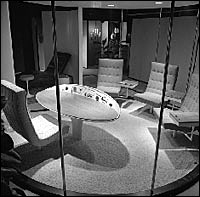
Technology was supposed to eliminate paper in our offices, so what happened?
Fam Pract Manag. 2008;15(7):50
Author disclosure: nothing to disclose.

When I opened my practice several years ago, I decided that I would avoid the problem of transitioning from paper charts to computerized charts by going electronic from day one. Thanks to that prescient decision, I have for many years enjoyed the benefits of a paperless office. Except, of course, for all the paper.
Despite every “chart” in my office being in actuality a file in a server and despite not having touched a physical prescription pad in years, my staff and I still find ourselves awash in paper. Records from other offices, referral letters, requests from durable medical equipment companies, orders from home health companies, Family Medical Leave Act forms, mood disorder questionnaires, death certificates – the list seems endless.
My “paperless” practice recently acquired our fifth paper shredder in as many years. Not long ago, I had to add a scanner to the computer in my personal office, bringing the total number of scanners in the practice to four. I've even had to acquire a device that folds sheets of paper into thirds to partially automate the labor-intensive task of mailing out bills to patients. Clearly, something has gone wrong with the paperless office. The idea was to use information technology to eliminate paper, not to accommodate it. It was ever thus: “The EDP [electronic data-processing] industry in the 1950s thought that the whole world would have made the transition to computers by 1960. And it hasn't happened yet.” So said Business Week in a 1975 article on the office of the future.1
Just as prolonged or repeated contact with the “health care” system is a sure sign that one is not healthy but ill, the “paperless” office, by some Orwellian process, has paradoxically come to mean an office armed with printers, scanners, copiers, shredders and other devices for which an office devoid of paper would have no use. “You will probably never get away from paper entirely,” notes one editorialist. “Some information, including transferred records, proof of insurance and authorizations, will continue … in print form for the foreseeable future.”2 Even when paper can be done away with, it is sometimes a Pyrrhic victory: “If scanning software is unable to convert images into data through optical character recognition, the result is an electronic image of a paper document, not easily searchable and manipulatable data.”3
And so we find ourselves in bizarre, hybridized, electro-paper offices. Post-it notes cling mockingly to the housing of video monitors. Digital faxes are printed, signed with a ballpoint pen, re-scanned back into digital and faxed on. In the war between paper and silicon, an awkward armistice has been reached.
Still, for early adopters like myself it's hard not to feel a little disappointed. All our electronic records and practice management systems and e-prescriptions and personal digital assistants were supposed to relegate the page to obsolescence, and for all their admitted utility, they haven't. If the endless reams of paper that circulate throughout our offices could talk, there is little doubt what they would say to us and to our vaunted information technology: “It's our world, you just live in it.”